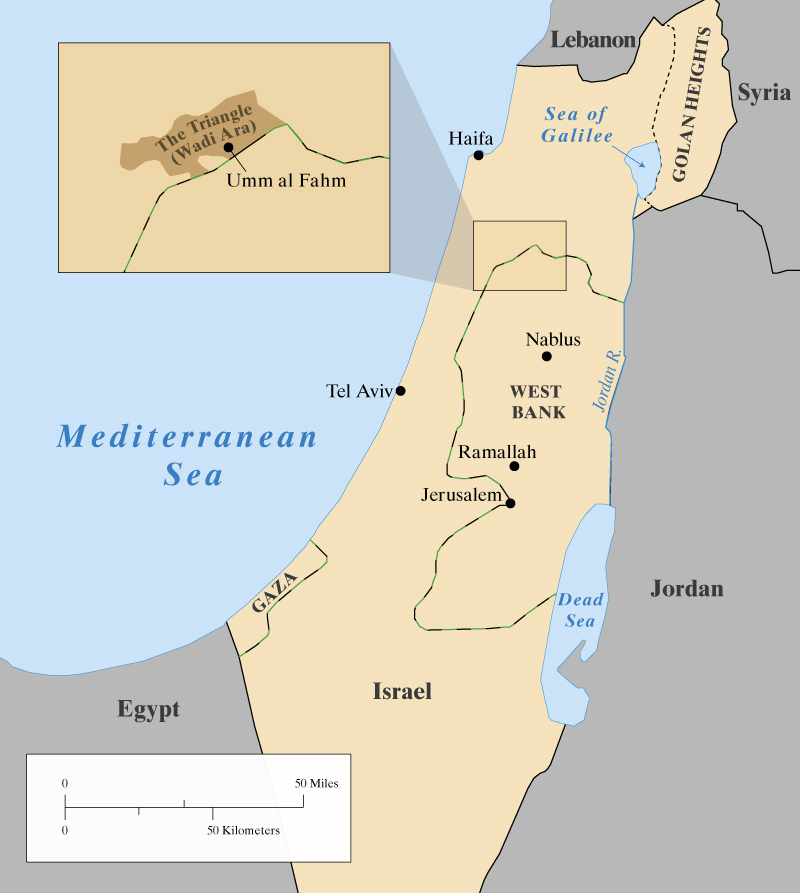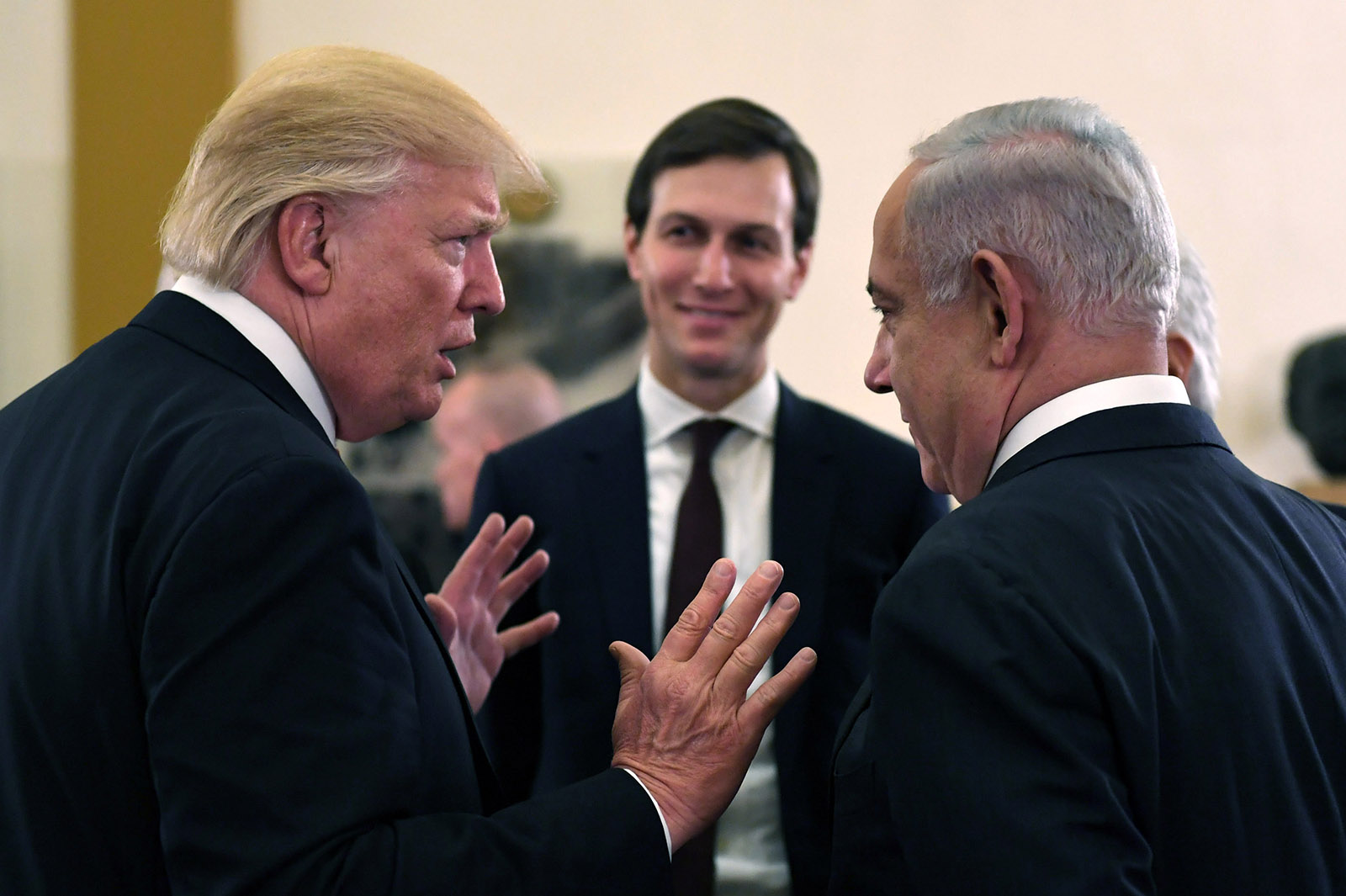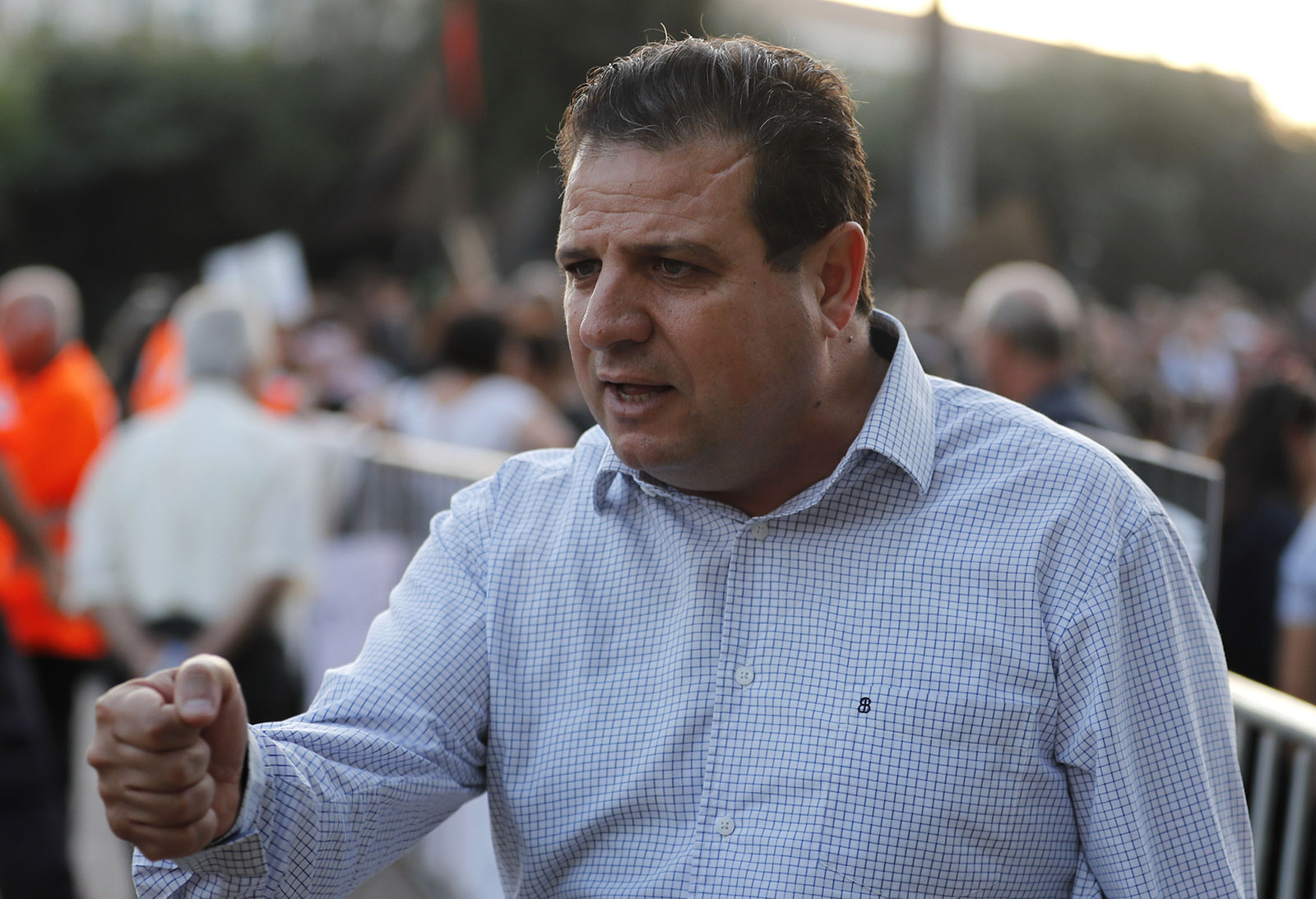Jared Kushner said he read twenty-five books about the Middle East before hatching the Trump “Deal of the Century,” the White House plan for Israel and the Palestinians. I wonder if one book was the novel Let It Be Morning, by Sayed Kashua, first published in Israel in 2004. In it, Kashua, who was born in the town of Tira in Israel’s Wadi Ara, an area also known as “The Triangle,” envisions a day when a peace agreement between Israel and a newly independent Palestinian state brings change to his village:
Many rolls of barbed wire are blocking the road… they stretch as far as the eye can see… the wire runs around the entire village… In the distance we see that besides the tanks blocking the road, there are others in the fields.
The village goes dark: no water, electricity, TV, sewage services. And when it all revives a few days later, the villagers hear from patrol vehicles that they are being welcomed to the new state of Palestine. They have been forcibly removed as citizens of Israel.
Now flip to page thirteen of the “Deal of the Century” and read this brief paragraph that, along with the plan’s green light for Israel to annex the settlements and the Jordan Valley, has sparked a fierce political debate in Israel:
Land swaps provided by the State of Israel could include both populated and unpopulated areas. The Triangle Communities consist of Kafr Qara, Ar’ara, Baha al-Gharbiyye, Umm al Fahm, Qalansawe, Tayibe, Kafr Qasim, Tira, Kafr Bara and Jaljulia. These communities, which largely self-identify as Palestinian, were originally designated to fall under Jordanian control during the negotiations of the Armistice Line of 1949, but ultimately were retained by Israel for military reasons that have since been mitigated. The Vision contemplates the possibility, subject to agreement of the parties that the borders of Israel will be redrawn such that the Triangle Communities become part of the State of Palestine. In this agreement, the civil rights of the residents of the triangle communities would be subject to the applicable laws and judicial rulings of the relevant authorities.
The antiseptic language with which this document lays out the potential fate of these “Triangle Communities”—residents who are, after all, Israeli citizens, albeit Arab ones—is chilling when you consider what is actually being proposed here: a forced population transfer. Something that is outlawed in wartime by the Geneva Conventions would be accomplished here not only in peacetime, but even in the name of peace-making.
This paragraph of “the Vision,” like much else in the document, appears to have Israeli Prime Minister Benjamin Netanyahu’s fingerprints all over it. Indeed, this idea was first proposed by Netanyahu to Kushner and Jason Greenblatt, the then White House Envoy, in 2017 as part of an exchange for the Gush Etzion bloc of settlements, according to Amit Segal, a TV reporter known to be close to the Israeli prime minister. But the proposal was introduced into an Israeli election cycle even earlier, in 2004, by the right-wing politician Avigdor Lieberman, the leader of Israel Beitenu, a small party popular with Russian émigrés.
In Israel, demographics is always politics. An idea first floated by the Israeli far right thus made it into the mainstream of Israeli electoral politics, thanks to Netanyahu’s seizing upon it opportunistically as a potential gerrymandering scheme. Now it has been embraced by the Trump administration.
*

The Triangle area encompasses about 300,000 citizens of Israel, nearly all of whom are of Palestinian descent from families who lived in Israel prior to 1948. It includes ten Arab towns that lie adjacent to the Green Line (the 1948 Armistice Line) along Israel’s Route 65, which cuts across the width of the country from Hadera on the coast in a northeasterly direction toward the Sea of Galilee. The Israeli-Palestinian conflict often has played out within this circumference.
Umm al Fahm, the largest town in the area with 60,000 inhabitants, became a particular flashpoint in Israel in the 1990s with the rise of the rejectionist Northern Islamic Movement that has its base there. (Before that, the town was ruled by the Israeli Communist Party known as Hadash, still the main secular Arab political party.) Because of the town’s proximity to Jenin in the West Bank, a center of Palestinian militancy during the Intifadas, there was a spate of suicide bombings near Umm al Fahm before the separation wall was built by the Israeli government to bar access from the West Bank. Then, in 2000, during the Al Aqsa Intifada in the Occupied Territories, violent protests in and around Umm al Fahm resulted in the fatal shooting of thirteen Arab citizens of Israel by Israeli security forces.
Advertisement
The incident was a tremendous shock to the Israeli establishment, resulting in a high-level commission chaired by then Supreme Court Justice Theodore Or. His report ultimately recommended a series of reforms to address social and economic inequalities and problems of policing. Implementation of these measures was partial and spotty, but relations between the Triangle citizens and the Israeli authorities have improved immeasurably since this fraught history. In 2009, the then Speaker of the Knesset (and now President of Israel), Reuven Rivlin, visited the city, met with the mayor, and, in an effort to reassure his audience, pledged: “There are those who say we need to transfer Umm al Fahm. But Umm al Fahm is, was and will always be an Israeli city.”
Today, even the leadership in the Northern Islamic Movement now engages in regular municipal politics as elected officials and interacts with surrounding Jewish communities, as the area has become more integrated into the regional economic grid of Israel. It was, in fact, the Netanyahu-led government that agreed to begin the process of creating the first-ever economic development zone for Umm al Fahm, something first proposed over a decade ago by then Prime Minister Ehud Olmert.
What was known as the 922 economic initiative followed: a five-year plan—just successfully completed—that invested some 10 billion shekels ($2.9 billion) in improving the transportation and economic infrastructure in the Arab sector, including the Triangle communities. Ironically enough, that program was led by Dr. Ayman Saif, an economist who worked in the prime minister’s office—and a resident of Ar’ara, one of the villages potentially slated for transfer. Thanks in part to such redevelopment, Umm al Fahm is today better-known as the home of one of Israel’s leading art galleries. The Umm al Fahm Gallery, which specializes in Palestinian art and heritage, also runs a program for children in partnership with the Bezalel Academy of Arts and Design, which is considered Israel’s national arts academy.
Polls consistently show that if there were to be a separate Palestinian state, even those citizens of Israel who identify as Palestinian overwhelmingly desire to remain in Israel. Increasingly, Arab citizens of Israel feel that they are a part of Israeli society, with 65 percent of Arab citizen respondents of Israel saying that they are proud to be Israelis, and 85 percent of them agreeing that Israel is a good place to live, according to a 2019 Israel Democracy Institute poll. Another recent poll found that nearly two thirds of Arab citizens of Israel saw voting in elections as their “civil right.” Israeli domestic issues lead their concerns as voters. Now, however, the fear of transfer—and of forced change of citizenship status and sovereignty—has been added to that list.
Among the population of Arab citizens that demands its rightful place in Israeli society is a growing elite—in business, entertainment, medicine, and law—on which the country increasingly depends. Among those who would potentially be subject to a population transfer are Tayibe resident Samer Haj Yehia, the president of Bank Leumi, Israel’s largest bank, along with Knesset members Ahmed Tibi (also from Tayibe), Yousef Jabareen (from Umm al Fahm), and at least four hundred doctors, many with senior hospital positions, who are residents of the town Kfar Qara (Arab doctors and nurses are quite prominent in Israeli medicine). But the growing integration goes beyond a few high-profile individuals: the graduation rate for students from the Arab sector is now approaching that of their Jewish Israeli counterparts in the country’s colleges and universities.
The proposal to export 300,000 Arab citizens of Israel to a Palestinian statelet is explosive precisely because they have become increasingly integrated into Israeli society. In recent elections, they have also become a significant voting bloc opposed to Netanyahu’s Likud party and other parties on the Israeli right. Consequently, to many Israeli observers and others, this element of the Deal of the Century looks very much like a Netanyahu-inspired scheme for election manipulation, comparable to, say, transferring a swath of Southern California to Mexico.
*
The integration of the Arab sector into Israeli society, however, has come to represent a significant challenge to the hegemony of the right in Israel. Lacking a written constitution, Israel depends on a collection of statutes known as the Basic Law, measures that can be passed in the Knesset only with a super-majority. That’s why, on the last day of its session in 2018, Prime Minister Netanyahu personally led a floor fight that lasted until dawn, in a frantic, ultimately successful bid to inscribe a new Nation-State law into the Basic Law. The new law overrides much of the original language from the Declaration of Independence that proclaimed the equality and rights of minorities.
Advertisement
Pointedly, it doesn’t mention equality at all. Instead, the status of the Arabic language is downgraded, and the secular character of the state is similarly eroded by the enshrining of Jewish religious law under the purview of the state-controlled ultra-Orthodox rabbinate. One Jewish scholar, Rabbi Michael Marmur of Hebrew Union College-Institute of Religion in Jerusalem, called it “chauvinism masquerading as particularism.”
But the response to the Nation-State law was not what the Likud expected. The Arab parties in the Knesset, led by Ayman Odeh, a charismatic lawyer from Haifa and the leader of Hadash, were galvanized into a new unity. This Joint List, as the coalition of Arab parties is known, was the only parliamentary group that increased turnout for its vote between the first and the second election in 2019.
Any formal coalition between Jewish and Arab parties remains taboo in Israeli politics, fraught with danger even. The assassination of Prime Minister Yitzhak Rabin in 1995 followed a campaign of vilification by the Israeli opposition, then led by Netanyahu, over the Rabin government’s dependence on Arab votes in the Knesset to back its signing of the 1994 Oslo Accords. Likud and other right-wing parties consistently try to use the specter of Arab influence in the Knesset as a wedge issue. About a week ago, billboards were posted along the Ayalon Freeway in Tel Aviv claiming that Benny Gantz, the leader of the main opposition party, Blue and White, can win the next election only with the help of Arab parties—the clear implication being that any government that might include Arab support would not be legitimate. Speaking on Israeli evening news after the Trump announcement, Odeh said:
The homeland is not only land, but the social ties, the friendship of youth, childhood memories, the first love in the university, relations with the neighbors and the workplaces. And what is the message that the program delivers to all Arab citizens in the Galilee [the second largest constellation of Arab population in Israel]. That we are like the residents of the Triangle, but because of your distance from the West Bank, we will have to wait until the next plan?
The transfer of a population that does not have the consent of that population is a forced transfer. Forced population transfer is blatantly illegal under international law. As Yuval Shany, an international law expert at Israel’s Hebrew University and chair of the United Nations Human Rights Committee, explained to me via email:
International law does not bar a state from ceding away part of its territory. But it cannot strip its own nationals of their citizenships against their will, and must not engage in drawing borders in order to advance a discriminatory policy… This is tantamount to seeing them as second-class citizens, or even a Fifth Column in the State… If the transfer of land itself is approved, the population must be given the option to relocate in Israel.
Indeed, its implementation is virtually unimaginable. Professors at Haifa University and the Technion, often called the MIT of Israel, would find their classrooms depleted of students; hospitals would experience severe shortages of doctors and nurses; and pharmacies in Israel, which are overwhelmingly staffed by Arab citizens of Israel, would have no one to issue prescriptions. That’s before one even begins to consider what such a radical effort to reverse the growing integration of Israeli society would do to Israel’s international reputation.
As a result, the population transfer provision of the Trump–Netanyahu plan has quickly united the Israeli opposition. Over the weekend, Blue and White put out a statement objecting to the measure. The Labor Party and Meretz are already on record doing so. With Netanyahu apparently feeling the heat, Amit Segal, the TV journalist whom the prime minister often uses as a conduit for information he wants to leak, reported on Channel 12 News on Sunday that Netanyahu no longer backed the idea, after all. Responding in a Facebook post Sunday night, Odeh noted:
When it was revealed that the Deal of the Century involved the removal of citizenship and rights of the Triangle and a threat to all Arab citizens, his polling showed that turnout among Arab citizens would go up. So he has now decided to issue a statement that his office does not support the inclusion of the Triangle in the Palestinian state… We are not an election game for this dangerous racist. We are the leaders of our homeland. With his statement or without it, we will strengthen our strength, presence, and impact.
Ahead of next month’s general election, Odeh’s Joint List of Arab parties is already the third largest group in the Knesset. It would be an unforeseen irony of Trump’s Deal of the Century that it may further empower Israel’s Arab and Palestinian citizens.




